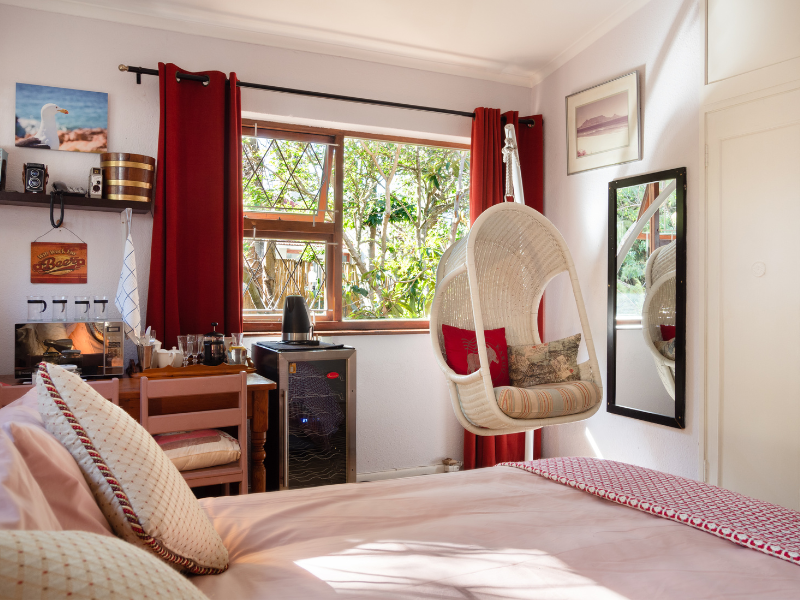Published on May 4th, 2023
How retrofitting your home makes it cooler
When you think of making your home energy efficient you might often think about your bills in winter, but retrofitting your home with energy efficiency measures will make it more comfortable (and cheaper to run) in the summer too.

When people talk about making their home more energy efficient it’s natural to think about winter and keeping yourself warm, but what’s less widely known is how important these measures are for keeping your house cool in summer. Given climate change and how hot these past few summers have been, a cool, energy efficient home is going to be an increasingly big topic.
You only need to look at the last 5 years to see the ever increasing need to improve your home’s cooling and ventilation systems with temperatures reaching over 40 degrees in parts of the UK.
With this in mind, we thought we’d help you get ahead of the curve by showing you how home energy upgrades and retrofits can keep your pad nice and airy in summer.
Contents:
- Insulation (yes, you heard us right)
- Ventilation measures
- Heat pumps
- Shading
- Reflective barriers
- Use a smart thermostat to keep a cooler overall temperature
- Seal air leaks to stop cool air escaping
If you’re looking for advice on how to make your home more energy efficient you can book a home assessment with us, where an accredited surveyor will tell you exactly where your property can be improved and provide you with a plan on how to take the property forward and make it more energy efficient. You can book an assessment here.
1. Insulation can make your home cooler
Upgrading your home’s insulation keeps you cooler in summer as well as warmer in winter. This is because it reduces the transfer of hot air coming in (and in winter stops the transfer of cold air coming in).
You can insulate your attic, walls and floors. In fact, most homes absorb heat through the roof, so if you insulate your attic floor it stops this heat from radiating down into the rest of the house. We advise you to consider fibreglass insulation for this which is easier to install and pays itself back with lower energy bills over the course of the year.
2. Ventilation measures get air through your home
The most useful ventilation measure is to install trickle vents. Trickle vents are small filtration devices which are fitted either to the frame of the window or between the glass and the frame. These vents are designed so that you can open or close them to allow for fresh air to circulate through the home, while letting polluted air out. You might well have seen them on newer double glazed windows. They also mean you can leave your windows closed while you’re out and still let cool air into your property.
Another change you can make is to install extractor fans around your house. These not only remove cooler air from inside but reduce the risk of damp and mould. Having an extractor fan in the bathroom is a critical way of removing water and condensation from showers and baths, which if unventilated can quickly leave mould around the room. An extractor fan above your hob is also really effective in extracting the heat from cooking which often causes kitchen areas to get very hot.
Take a whole house approach: Structural ventilation
As we always recommend, if you’re looking at making one or two changes, you should always carry out the maximum amount of work, aiming for the whole house approach. This not only reduces the cost of individual jobs, and reduces the amount of disruption in your home, it lets you coordinate jobs alongside each other. An example of this is to install structural ventilation around the house to avoid dampness and to let cool air pass through the house. This involves putting in air ducts and additional piping around the home, a bit like those air ducts Tom Cruise crawls around in Mission Impossible (but obviously a lot smaller). It’s a slightly bigger job, but if you’re looking at other measures this could be done alongside them.
3. Heat pumps work to cool your house as well as heat it
A heat pump can cool your home by reversing the process of transferring heat from one place to another, instead moving cool air into your home. It’s worth noting that not all heat pumps have a cooling option, so make sure to check with the installer if theirs has this capability.
Heat pumps are compatible with a range of both heating and cooling emitters (these can be things like underfloor heating or radiators), which maintain a comfortable temperature in your home throughout the year. In colder weather the heat pump is set so that these emitters will heat your home and in warmer weather they can achieve a cooling effect.
When set to cool, the heat pump will pump chilled water through its convector. Its fans draw the warm air from the room where the cold water within cools the air as it passes through. This cooled air is then dispersed back out into the room, reducing the temperature.
And air-to-air heat pump is usually your safest bet for getting a heat pump that can cool as much as it can heat.
4. Shading
Do like the Romans do and use the old fashioned power of shade. The easiest and most effective form of shading to look at is your blinds and shutters. A good energy tip for keeping your house cool is to close your blinds during the day and open them at night, this keeps the heat from the sun out during the day, and the cooler air in during the night. That said it can be a bit dark if you have your blinds shut on a sunny day, but there’s no harm doing it in intervals.
In terms of what to look for when shopping for blinds and curtains, we recommend double layered drapes, these are effective at keeping the sun out during summer, and the heat in during winter. You can also peel them back to single layered if you want a happy medium.
As a more unusual option, if you have the space you can also consider trees and landscaping around your house to offer shade. Deciduous trees are ideal as they provide the foliage to shade your house during summer, and lose their leaves in winter meaning more light (and therefore heat). If you like your wisteria then you could consider growing or installing vines around your house too.
5. The exterior of your home effects how hot it gets on the interior
Dark-coloured homes absorb about 70% of the radiant energy from the sunlight that hits the property. This heat can then be transferred to the interior of your home through conduction. Inversely light-coloured surfaces reflect the bulk of this energy away, stopping it from entering your home in the first place. Choosing a white, or lighter colour to paint your home is an effective way of ensuring the heat doesn’t make its way in.
Another tip is to install reflective foil to the underside of your roof to ensure it stops the heat being transferred in. You can do this yourself by stapling it to the ceiling of the attic, just be careful not to fall if you're standing on something.
6. Use a smart thermostat to keep a cooler overall temperature
Smart thermostats work to keep your home at a constant temperature all year around, usually around 20 or 21 degrees. So rather than putting your heating or cooling system on whenever you feel uncomfortable - which uses more energy to kickstart - the smart thermostat keeps it on a constant. You can also set your smart thermostat to use energy at cheaper times of day when the grid is less in demand (depending on whether you have a smart energy tariff).
7. Seal air leaks to stop cool air escaping
This might sound like an anti-ventilation measure but believe us it’s not contributing to your comfort or your bills to have air leaks. Make sure that your windows and doors are properly sealed to prevent warm air from entering your home and cool air from escaping. You can use weatherstripping or caulking to seal any gaps.
If your windows are old or draughty, consider replacing them altogether with energy-efficient windows that have a low-E coating to reflect heat.
If you’re looking for advice on how to make your home more energy efficient you can book a home assessment with us, where an accredited surveyor will tell you exactly where your property can be improved and provide you with a plan on how to take the property forward and make it more energy efficient. You can book an assessment here.
Written by

Oisin Teevan